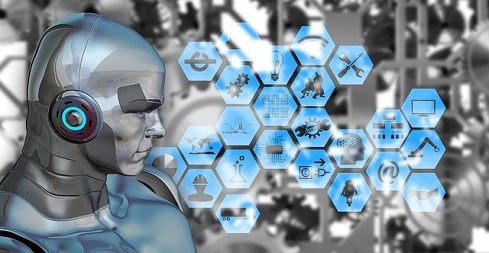
About RPA
Robotic process automation (RPA) is the use of software with artificial intelligence (AI) and machine learning capabilities to handle high-volume, repeatable tasks that previously required humans to perform. These tasks can include queries, calculations and maintenance of records and transactions.
RPA Used
RPA can be used to automate workflow, infrastructure, back office process which are labor intensive. These software bots can interact with an in-house application, website, user portal, etc. The RPA is a software program which runs on an end user’s pc, laptop or mobile device.

Top Answers to RPA (Robotic Process Automation) Interview Questions
1. Compare Robotic Process Automation with traditional automation.
| Criteria | Robotic Process Automation | Traditional Automation |
| Technology | Non-intrusive, scalable, and versatile | Intrusive, less scalable, and not so versatile |
| Interface | Mimics human actions | Relies on coding and APIs |
| Customization | Excellent | Average |
| Integration | Excellent | Average |
2. What is RPA?
Robotic Process Automation (RPA) is a type of software that is used to do automation of the fundamental tasks in software applications like how a human performs them. The software robot can be trained for a workflow/process with different steps and application. It could be, for example, taking received forms, sending a receipt message, checking the forms for completeness, documenting the form in a folder, and updating a spreadsheet with the form name, the date recorded, etc. RPA programming is intended to diminish the weight of monotonous, straightforward tasks/work on workers.
3. List the different types of tools in RPA.
- Blue Prism
- UiPath
- Automation Anywhere
- WorkFusion
- OpenSpan
4. Describe the life cycle of RPA.
There are four different phases in the RPA life cycle:
- Analysis: Identifying the business process for which RPA development is needed
- Development of the Bot: Fulfilling the requirements
- Testing: Performing quality checks
- Deployment and Maintenance: Deploying and maintaining the bot by the team
5. How would you deploy UiPath?
- Install UiPath Studio on the system on which we want to automate processes
- To provision the machine, take the robot key from Orchestrator and enter it into the Robot Configuration board and, furthermore, the Configuration URL that can be found in the Admin section of Orchestrator
- Publish the procedure, except if we simply need to utilize our existing procedure
- Develop an Environment
- On that Environment, create a release of the process
- Start job
6. How do you invoke a UiPath workflow?
Workflows are small pieces of common automation that are reusable and applicable in multiple scenarios. They are used to automate similar processes. We can invoke a workflow using the ‘Invoke Workflow’ function in UiPath and save it as a template. We can also combine two workflows to make combined automation.
7. What is Citrix Automation?
Citrix automation is used to automate processes such as filling fields in a form and submitting the form in a virtual desktop application. We can also use it for processes such as data entry, etc.
Go through the RPA Course in London to get a clear understanding of RPA!
8. What are RPA Bots and how to create them?
Bot creator tools, such as Automation Anywhere or UiPath, are used to create bots that are used to automate processes or tasks. The following steps are involved in the creating a bot:
- Record a task
- Complete the bot implementation
- Test the bot
- Upload the bot to perform the automation tasks
9. How are TaskBot, MetaBot, and IQBot different from one another in an RPA tool?
| Features | TaskBot | MetaBot | IQBot |
| Core competency | Used in frontend | Facilitates scalability with next-gen integration | Continuous learning and enhancing process automation |
| Used | For repetitive and rule-based tasks | In complex and scalable processes | To manage fuzzy rules |
| Example | HR administration, procure-to-pay, quote-to-cash, etc. | Enterprise-wide automation; requires only minimal maintenance | Real-time learning, extracting languages from the given data, etc. |
10. List the industrial applications of RPA.
- Banking: Automation of credit card applications, loan processing, etc.
- Retail: Updating orders, managing fake accounts, processing shipping notifications, etc.
- Telecommunications: Monitoring subscriber feeds, fraud management, customer data updates, etc.
- HR: Candidate sourcing, background verification, payroll automation, etc.
11. List the advantages of Robotic Process Automation.
- Improved efficiency of tasks
- Performing the tasks quickly without errors
- Increased productivity
- Cost-saving
- Decreased turnaround time
12. How do you perform Screen Scraping in RPA?
Screen scraping is an essential component of the RPA toolkit. It is used to capture bitmap data from the screen and cross-check it with the stored information to decipher it.
Learn more about RPA from this RPA Training in New York to get ahead in your career!
13. List the benefits of Screen Scraping.
- It works on application elements that are not accessible through the code or UI frameworks.
- It provides text digitization through Optical Character Recognition (OCR).
- It is easy to implement and mostly accurate.
14. How can you differentiate RPA from Macros?
| Robots | Macros |
| Learn and enhance themselves from repetitive processes | Do not learn from repetitive processes |
| Can act autonomously | Cannot act autonomously |
| Respond to external stimuli and reprogram themselves | Do not respond to external stimuli |
| Highly secured automation | Security is not a high priority here |
15. What are the different automation frameworks used in software automation testing?
- Modular automation framework
- Keyword-driven framework
- Hybrid automation framework
- Data-driven framework
16. List the components of RPA Solution Architecture.
- Enterprise applications such as ERP Solutions (SAP)
- RPA tools, in any environment such as Citrix, web, or desktop
- RPA platform: Scheduling, distributing, and monitoring the execution of software bots
- RPA execution infrastructure
- Configuration management
Go through this RPA Training to learn more about RPA!
17. What is Thin Client and Thick Client in RPA?
| Thin Client | Thick Client |
| Does not run on a local machine, rather runs on a virtual client/server architecture | Directly installed on a local machine |
| E.g., VMware, VirtualBox, etc. | E.g., any apps like notepad, browser, etc. |
18. List the limitations of RPA.
- Limitations to tasks like decision-making or judgmental tasks
- Not a cognitive computing solution, rather learns through experience
- Might be error-prone when subjected to new environments without experience
- Higher cost of implementation across the industry
19. Explain Flow Switch in UiPath.
Flow switch (aka flow decision) is a flowchart-specific activity that splits the control flow into two or more branches based on some conditions. Whichever condition is satisfied, that task is executed.
Interested in learning RPA? Enroll in Intellipaat’s RPA Training in Sydney to learn more!
20. What are the different activities performed by UiPath?
- Core activities: For the automation process
- Cognitive activities: For language translations
- Credential activities: For enabling the addition and deletion of credentials
- Database activities: For executing queries, transactions, etc.
- Excel activities: For automating MS Excel tasks
- FTP activities: For performing functions in the FTP server
- Intelligent OCR activities: For digitization and scraping
- Mail activities: For working with IMAP, POP3, SMTP, Outlook, etc.
- PDF activities: For data extraction from PDF
- Python activities: For invoking Python scripts and methods
- Terminal activities: For retrieving data from the terminal
- Web activities: For performing SOAP and HTTP requests to any web APIs
- Word activities: For automating activities in MS Word
21. What are the various types of Recording available in UiPath?
- Basic recording
- Desktop recording
- Web recording
- Citrix recording
22. Differentiate between Blue Prism and UiPath.
| Criteria | Blue Prism | UiPath |
| Programming language | C# | VB |
| Control room/dashboard | Client-based server (app-based) | UiPath Orchestrator (web-based) |
| Cost | High for acquiring and usage | Low for development |
23. What are the important aspects to be considered in the planning phase of automation?
- Selecting the right RPA tool
- Choosing the right framework
- Selecting various items, such as in scope and out scope, based on the task
- Testing the environment
- Identification of deliverables
Learn complete RPA concepts from this RPA Training in Hyderabad in just 24 hours!
24. If the organization’s infrastructure is not aligned with RPA, then what needs to be done?
RPA does not have compatibility issues; it can simply be enabled in the organization’s existing infrastructure. Moreover, it can be modified and is flexible enough to make it aligned easily with the organization’s infrastructure if needed.
25. Define Single Block Activity in UiPath.
Single Block Activity (aka Sequence) is a small project used for linear processes. It enables us to go from one activity to another in a flow, and hence the name. It can be reused, when needed, for automation as an individual or as a part of the state machine.
26. How do you use Assign Activity and Delay Activity in UiPath?
- Assign activity is generally used to assign a value or output to a variable. It can be used inside loops, arrays, etc.
- Delay activity is used to delay or pause the automation for a particular duration.
Are you interested in learning RPA from experts? The RPA Course in Bangalore is the right decision you can make today!
27. How do you use Assign Activity and Delay Activity in UiPath?
When the robots and applications run on the same machine, we can use UI automation. It can integrate directly with the technology behind the application to trigger events, identify elements, and get the data. There are three types:
- Desktop automation
- Image automation
- Background automation
28. What are Selectors in UiPath?
UiPath uses selectors that store the attributes of a graphical user interface element and its parents in the form of an XML fragment. Selectors are automatically generated.
29. What are Selectors in UiPath?
It is a type of automation that uses a finite number of states in its execution. Only when an activity is triggered, it enters a state, and it exits the state when another activity is triggered. The activities of the state machine are Entry, Exit, and Transitions.
30. Explain how to Create and Remove an argument in UiPath.
To create an argument:
- In the Designer panel, click on ‘Arguments’ (the Argument panel will be displayed)
- Click on Create argument line
To remove an argument:
- In the Arguments panel, select an argument or right-click on the argument and press ‘Delete’
31. What are the different types of Logs? What are Log Fields?
There are two different types of Logs:
- Default logs
- Execution start
- Execution end
- Transaction start
- Transaction end
- Error log
- Debugging log
- User-defined logs
Log fields are Message, Level, Timestamp, FileName, jobId, processName, processVersion, windowsIdentity, and robotName.
Related Courses – Learn Online Now
RPA (Robotic Process Automation)
Machine Learning with 9 Practical Applications
Mastering Python – Machine Learning
Data Sciences with Python Machine Learning
Data Sciences Specialization
Diploma in Big Data Analytics
Learn Internet of Things (IoT) Programming
Oracle BI – Create Analyses and Dashboards
Microsoft Power BI with Advance Excel
